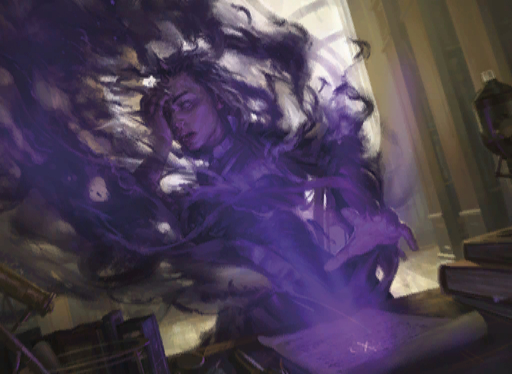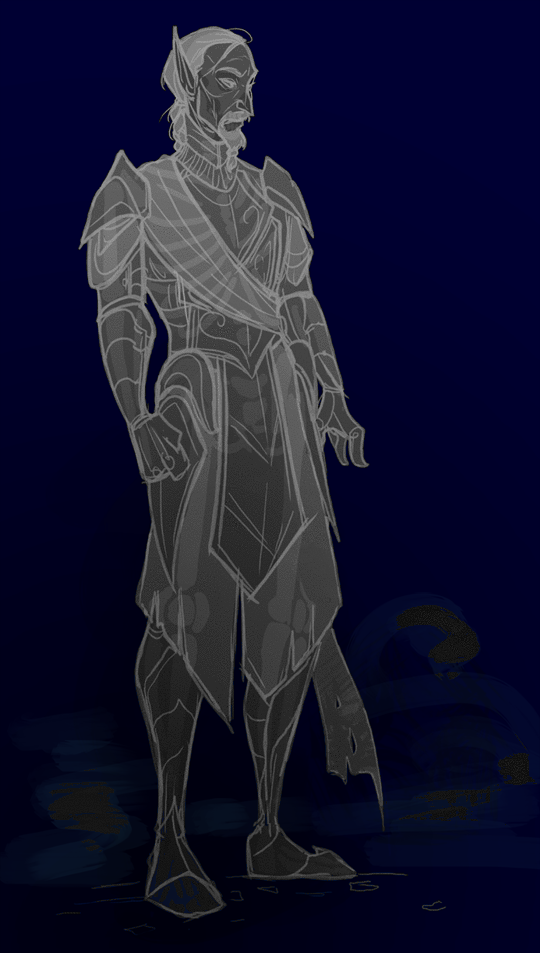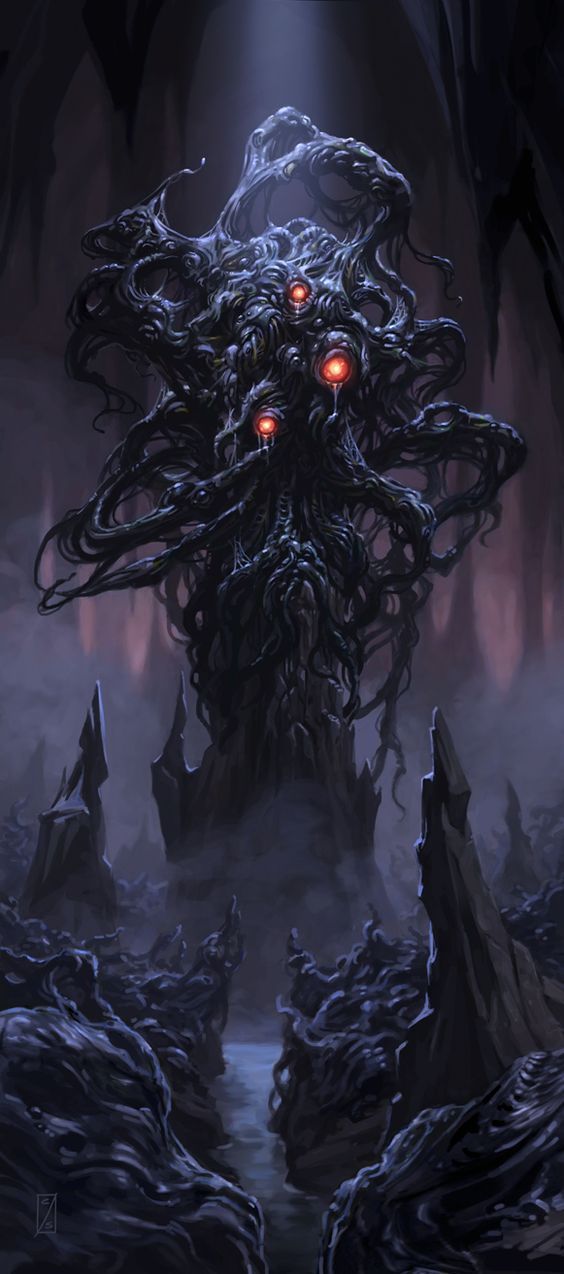“The painter has the Universe in his mind and hands.”
— Leonardo da Vinci
Introduction
WWWe find art of all types across the planes, from the more material ones such as painting, sculpture, and pottery to the more ephemeral like dancing, music, and storytelling. Many of these artists are content to stay in their atelier and create; some, however, find that the only way to appease their internal muse is to travel. Even fewer find that the best place to find inspiration is as an adventurer discovering the unknown.
It is typical of these wanderlust-driven artists to retire and create after some time out and about, though surely some find the draw of adventure too tantalizing and never truly give it up. Whether they end up as exiles or just to appease their wanderlust, there is a particular type of artist, exceptionally rare, that you can find adventuring across the planes — the Inkscribe.
Lore
TTThe Inkscribe is more than just an artist, however. They make a Faustian bargain with living ink; a black, viscous fluid with its own desires that will stain the soul. This is a steep cost to pay as the Inkscribe forever finds themselves fighting against the living ink while simultaneously allowing it some control to create true masterpieces. The art of an Inkscribe can change reality to match the whim of the artist and the ink. Manipulating people, places, and things to their desire are as easy as a stroke of the brush. Masters of the art can even truly create life, making ink-based imitations at their beck and call.
To use the living ink, an individual offers themselves to it. The viscid fluid will rush over the individual, attempting to encase them in its dark tide. A battle of wills begins, with the hopeful Inkscribe pushing against the ink. The engagement does not always end well for the neophyte; those who lose or surrender are never seen again. If they prove they can work with it, however, the living ink will retreat inside of the Inkscribe. There it will remain, lurking and waiting for opportunities to contest the Inkscribe.

In the Fourth Age, the current time period of the Trigate universe, Inkscribes are still exceptionally rare and relatively unheard of.
The living ink originated on the Plane of Asnocad, the home of the Xhimelech Elves, where it was originally seen as nothing more than a novelty. This was before the Selenehelion of Asnocad, an event that changed their world, cultures, and even the Xhimelech themselves.
Before this, the Xhimelech were never fully there in the physical sense, their forms being transparent and looking like living shadows more than the typical organic life you would find on their world. To them, this was always how they had known themselves, but the Selenehelion proved this was not the case.

In an earlier period of the Fourth Age, some Shadow Elf (This is what they called themselves then) adventurers stumbled across a cave system that took on a more organic appearance as they descended deeper into it. Within this network of caves, they came across a floating ziggurat crafted from pure white stone. One elf, later on, would say that stone itself reacted to them, turning into a disgusting corrupted black color that spread with every step they took on it. Inside, they found something that would change their species from then on out. With this, every Shadow Elf’s physical form was pulled from whatever place the other parts had existed within, giving them a new, entirely physical, and completely opaque appearance. Beyond this, however, their forms were… different. They had horns. Scales. Some had tails. Wherever they had existed in this half-state, it had changed them.
Other things aside from the Xhimelech changed from the Selenehelion; one of these would be the living ink. Before, it was a simple thing, not really worth attention. After however, it exhibited signs of intelligence. As life on Asnocad changed drastically, Xhimelech individuals would try to find any means to feel in control of their lives. It wasn’t until the ink’s stains upon the soul and they discovered its seemingly endless hunger that they tried to conceal its existence, but by then it was too late. Somehow, somewhere, someone had brought some of it to another plane and it became another fait accompli.
Mechanics
MMMechanically, Inkscribes function as a form of spellcaster with unique flavor, and rules attached to them. The abilities themselves that Inkscribes can manifest are referred to as strokes, portraits, compositions, or sketches. All their abilities must be purchased as individual powers and not as a part of a power pool.
To mechanically simulate the fact that the Inkscribe must concentrate and complete painting-like strokes of a specialized brush to use his powers, all powers must take the following disadvantages:
Concentration (½ DCV) [-¼]
Focus (Obvious & Accessible) [-1]
Gestures [-¼]
Extra Time (Full Phase, Only to Activate) [-¼]
Requires a Roll: Requires “Ink” Luck Roll (Dice Total vs Active Points/3 Target Number) [-¾]
Side Effect: Suffer Side Effect equal to -¼ per Matching Die Of Luck Roll [-¾]
The Focus disadvantage represents the additional inks and implements they use as a physical instrument and how they can be taken or destroyed. Being an Inkscribe and using the living ink uses a sort of “Luck Roll” to determine if the Inkscribe can use the ink’s power without drawing its ire. If they fail, side effects occur.
There are a few other mechanical considerations for Inkscribes:
Each ability has a target number that must be met by rolling their Ink or Artistry Dice. The number of dice available is determined by the Inkscribe’s Artistry Rating which is considered the accurate measure of the Inkscribe’s talent. Two ranks of the talent Living Ink Artistry would represent an Artistry Rating of two and grant two Ink dice.
The ink is hungry however, and the risk of this becoming an issue is replicated by more Ink dice being rolled incurs a higher chance of failure. If over two of the dice have the same face value, a side effect occurs. Doubles are a minor side effect, triples are major, quadruples are major but also affect the environment around the Inkscribe, and quintuples or higher would be an extreme side effect.
The Inkscribe can attempt to channel the ink without drawing its attention, but this process takes additional time to do correctly. If successful, it grants the Inkscribe an extra Ink die to determine if they successfully manifest the ability they were trying to use.
The Inkscribe can supplement the living ink with non-living ink. This allows the use of a Component Die which functions like an Ink die but does not count towards side effects happening.
The math of this works out in a way where the Inkscribe is going to be a little behind the curve in terms of what they can safely manifest with the living ink. It is important to understand that this situation is by design. Using the living ink is a risky and difficult practice in Trigate, and this is reinforced by making sure that if a character wants to push their limits and manifest their abilities at the outer edge of their capacity, then they are going to have to work for it.

If you want to read more on the Inkscribe, you can click here to read the page on the Zd10 Wiki.
“Life is a work of art. If you don’t like what you see, paint over it.”
